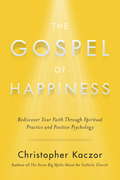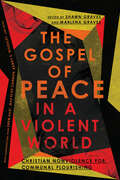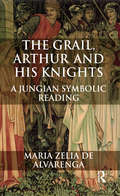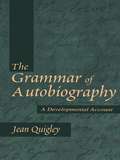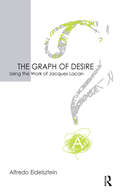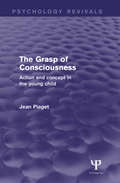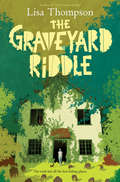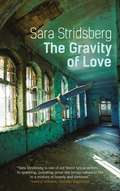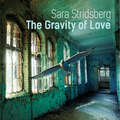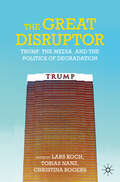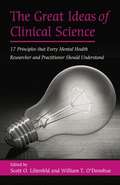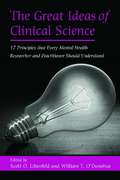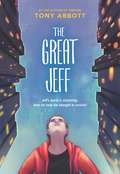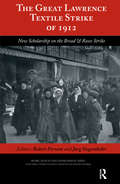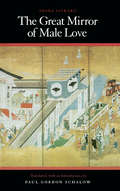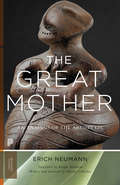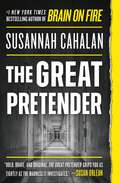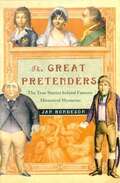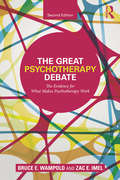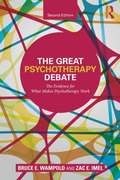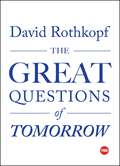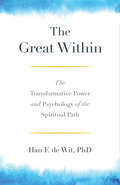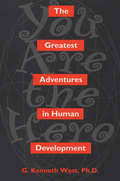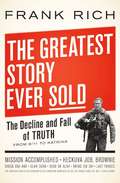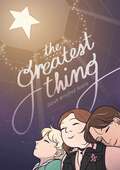- Table View
- List View
The Gospel of Happiness
by Christopher KaczorWhat is true happiness? How can you experience it? And can you live it wholeheartedly in your day-to-day life? Every thoughtful person asks such questions. Thoughtful Christians ask a few more questions such as, Can Christian practices enhance happiness? If so, how? And does Christianity provide happiness in a way that other paths, like psychology, cannot? Christopher Kaczor suggests answers to these and other questions about how to be happier. In The Gospel of Happiness, the bestselling author of The Seven Big Myths of the Catholic Church highlights seven ways in which positive psychology and Christian practice can lead to personal and spiritual transformation. Focusing on empirical findings in positive psychology that point to the wisdom of many Christian practices and teachings, the author provides not only practical suggestions on how to become happier in everyday life but provides insight on how to deepen Christian practice and increase love of God and neighbor in new and bold ways."Part of the Christian message is that authentic happiness is to be found not in selfishness, but self-giving," writes Dr. Kaczor. "In this book, I highlight the many ways in which positive psychology and Christian practice overlap. All of this points us toward deeper fulfillment in this life, and in the life to come."
The Gospel of Peace in a Violent World: Christian Nonviolence for Communal Flourishing
by Marlena Graves Marlena Graves, Shawn Graves Shawn Graves"Blessed are the peacemakers."The gospel of Jesus Christ is the good news of peace: peace between God and humanity, peace among humans. And yet it can be difficult to see that peace in our broken, violent world.shalomMay it be so.
The Grail, Arthur and his Knights: A Jungian Symbolic Reading
by Maria Zelia de AlvarengaThis book presents a broad and deep symbolic reading of the characters involved in the mythical Holy Grail. It discusses on Arthur and his loyal and faithful knights; the wise old Merlin and his visions of the future; the archetypical themes of quest and the desire to return to the golden age.
The Grammar of Autobiography: A Developmental Account
by Jean QuigleyThis is the first book to bring together four distinct literatures--functional linguistics, child language, narrative development, and discursive psychology. It is an outgrowth of the historical relationship between psychology and linguistics, especially the post-Wittgensteinian "turn to language." Relevant issues are situated at that interface in a way that should prove accessible to both linguists with little or no psychological knowledge and to psychologists with no linguistics background are addressed. Previously, there have been volumes on the theses of discursive psychology and social constructionism and volumes on the workings and theories of functional linguistics, but none have attempted to link the two as natural bedfellows in this way. While clearly situated within the spirit of the Berkeley school, it goes beyond it by virtue of linking functional linguistics and discursive psychology, and by doing this ontogenetically. Overall, this book is an investigation of the psycholinguistic thesis of the social construction of selfhood and the psychology of everyday life. Featuring the only book-length studies of the use of grammatical analysis as a research strategy in psychology, it integrates issues of human development and child language in a new way. It deals in careful linguistic analyses, examining the role of grammatical forms in constituting context which involves an examination of their functions that are then used to highlight fundamental aspects of development. The linguistic analyses are treated as a testing ground for the ideas and claims made in discursive psychology. The discussion deals with many of the current issues in psychology and related disciplines, including narrative, morality, agency, and responsibility, in order to show the central role of language in human functioning.
The Graph of Desire: Using the Work of Jacques Lacan
by Alfredo EidelszteinThe 'graph of desire' is one of the principal points of reference in Lacanian psychoanalysis. In this book the graph is analyzed in its multiple aspects and relations. Step by step, the author reveals and considers formulations from the simplest to the most complex. The treatment of this issue does not deal only with the development and explanation of its logical, mathematical and topological aspects but also goes through the psychoanalytical theory and practice. The author has immersed himself in Lacan's text "The Subversion of the Subject and the Dialectic of Desire in the Freudian Unconscious" to uncover and bring this fascinating subject to light.
The Grasp of Consciousness: Action and Concept in the Young Child (Psychology Revivals)
by Jean PiagetOriginally published in English in 1976, the book draws on and extends our knowledge of the process of learning. The subject of the study is the general stage in a child’s development that comes between his successful performance of an activity without knowing how he did it – that is, what he had to do in order to succeed – and the times when he becomes aware of what went into that action. The book reports the results of experiments conducted at the Centre of Genetic Epistemology. Children, ranging in age between four and adolescence, were asked to perform such tasks as walking on all fours, playing tiddlywinks, building a ramp for a toy car. They were then asked to explain how they had performed the task, and in some cases, to instruct the interviewer. Their answers show a number of surprising inaccuracies in the child’s ability to grasp the nature of what he has done. Taking a broad view of his results, Piaget shows that they reveal several stages in the gradual development of the child’s conceptualization of his actions. In analysing each stage, Piaget argues that the child’s concept of his own action cannot be considered a simple matter of ‘enlightenment’, but must actively be reconstructed from his experience. This view has always been at the core of Piaget’s work, and a new area of the child’s mental world is here given definitive treatment.
The Graveyard Riddle: A Goldfish Boy Novel
by Lisa ThompsonLisa Thompson returns to the world of The Goldfish Boy in her new novel.Melody Bird has discovered an abandoned old building in the corner of the graveyard...Though it's dark and creepy, she can't resist its pull. When she goes to explore, she finds a mysterious boy hiding out there. Hal tells Melody that he's a spy, using the house as a base for his undercover surveillance of a nearby suspected criminal. He's very secretive about the details, but Melody comes to trust him and starts helping him with his mission.Melody is determined to decode the strange riddles Hal finds hidden in the graveyard, but her friends Matthew and Jake question Hal's story. They decide to turn the tables and find out the truth about him, uncovering the biggest mystery of all...This extraordinary novel set in the world of The Goldfish Boy is a page-turning mystery with a sensitive story about friendship and trust at its core.
The Gravity of Love
by Sara StridsbergA dazzlingly inventive and acclaimed novel set in a Stockholm psychiatric hospital - by one of Sweden's most exciting literary talents"I'll put my head in the oven so you know where I am," he whispers, kissing her neck.Jim - charming, captivating, much loved by his women friends - has attempted suicide several times. Over his period of incarceration at the Beckomberga hospital for the mentally unstable, he voices his determination to succeed. Some day soon, he tells his daughter - as he has earlier told his mother and his wife - he will swallow sixty tablets, help them down with a bottle of whisky, and swim impossibly far out into the Atlantic.Will he, really? This question plagues Jim's daughter, the narrator of this powerful novel, who is as addicted to the hospital as her father is to alcohol. Through her subtle observations we understand the emotional needs of diehard alcoholics, the rationally uxoricidal, and other seemingly normal inhabitants of a psychiatric unit in the process of shutting down, depriving them of the only place they have known as home.A Magic Mountain for our times, for readers of Eimear McBride and Alexander Masters.Translated from the Swedish by Deborah Bragan-Turner
The Gravity of Love
by Sara StridsbergA dazzlingly inventive and acclaimed novel set in a Stockholm psychiatric hospital - by one of Sweden's most exciting literary talents"I'll put my head in the oven so you know where I am," he whispers, kissing her neck.Jim - charming, captivating, much loved by his women friends - has attempted suicide several times. Over his period of incarceration at the Beckomberga hospital for the mentally unstable, he voices his determination to succeed. Some day soon, he tells his daughter - as he has earlier told his mother and his wife - he will swallow sixty tablets, help them down with a bottle of whisky, and swim impossibly far out into the Atlantic.Will he, really? This question plagues Jim's daughter, the narrator of this powerful novel, who is as addicted to the hospital as her father is to alcohol. Through her subtle observations we understand the emotional needs of diehard alcoholics, the rationally uxoricidal, and other seemingly normal inhabitants of a psychiatric unit in the process of shutting down, depriving them of the only place they have known as home.A Magic Mountain for our times, for listeners of Eimear McBride and Alexander Masters.Translation (c)2016 Deborah Bragan-Turner (P)2016 WF Howes Ltd
The Great Disruptor: Trump, the Media, and the Politics of Degradation
by Lars Koch Tobias Nanz Christina RogersThe January 6 attack on the U.S. Capitol was the peak of Donald Trump&’s populist strategy during his first term. His goal was to gain support through confrontation and by portraying others as enemies. This book examines Trump&’s public image from a culture and media studies perspective. It explores how his political style during his rise to the presidency was shaped by social conflicts, how he escalated these tensions, and how he benefited from polarization. The contributions focus on Trump&’s first term, highlighting how his rhetoric during the Black Lives Matter movement and the COVD-19 crisis, as well as his promotion of conspiracy theories and attacks on political institutions, pushed American society to the brink of civil war. They discuss Trump&’s use of media and his politics of emotion, framing him as the &“Great Disruptor&” in the context of popular culture, fragmented public discourse, and aggressive rhetoric.
The Great Ideas of Clinical Science: 17 Principles that Every Mental Health Professional Should Understand
by Scott O. Lilienfeld William T. O'Donohue<p>The idea that there is a fundamental rift between researchers and practitioners should not come as a surprise to anyone familiar with the current literature, trends, and general feelings in the field of clinical psychology. Central to this scientist-practitioner gap is an underlying disagreement over the nature of knowledge - namely that while some individuals point to research studies as the foundation of truth, others argue that clinical experience offers a more adequate understanding of the causes, assessment, and treatment of mental illness. <p>The Great Ideas of Clinical Science is an ambitious attempt to dig beneath these fundamental differences, and reintroduce the reader to unifying principles often overlooked by students and professionals alike. The editors have identified 17 such universals, and have pulled together a group of the most prolific minds in the field to present the philosophical, methodological, and conceptual ideas that define the state of the field. Each chapter focuses on practical as well as conceptual points, offering valuable insight to practicing clinicians, researchers, and teachers of any level of experience. Written for student, practitioner, researcher, and educated layperson, this integrative volume aims to facilitate communication among all mental health professionals and to narrow the scientist-practitioner gap.</p>
The Great Ideas of Clinical Science: 17 Principles that Every Mental Health Professional Should Understand
by Scott O. Lilienfeld William T. O'DonohueThe idea that there is a fundamental rift between researchers and practitioners should not come as a surprise to anyone familiar with the current literature, trends, and general feelings in the field of clinical psychology. Central to this scientist-practitioner gap is an underlying disagreement over the nature of knowledge - namely that while some individuals point to research studies as the foundation of truth, others argue that clinical experience offers a more adequate understanding of the causes, assessment, and treatment of mental illness. The Great Ideas of Clinical Science is an ambitious attempt to dig beneath these fundamental differences, and reintroduce the reader to unifying principles often overlooked by students and professionals alike. The editors have identified 17 such universals, and have pulled together a group of the most prolific minds in the field to present the philosophical, methodological, and conceptual ideas that define the state of the field. Each chapter focuses on practical as well as conceptual points, offering valuable insight to practicing clinicians, researchers, and teachers of any level of experience. Written for student, practitioner, researcher, and educated layperson, this integrative volume aims to facilitate communication among all mental health professionals and to narrow the scientist-practitioner gap.
The Great Jeff
by Tony Abbott<P><P> Perfect for fans of Gary D. Schmidt comes the companion to the modern classic Firegirl from acclaimed writer Tony Abbott. Life hasn't been great for Jeff Hicks. <P><P>After years at his beloved St. Catherine's, he's forced to spend eighth grade in the public middle school, which he hates. He's no longer speaking to his former best friend, Tom Bender, because of "that burned girl" Jessica Feeney. <P><P>But worst of all, his family is changing, and it's not for the better. <P><P>When his mom comes home announcing that she's lost her job, Jeff begins to worry about things far beyond his years: How will they pay the rent? Will his absentee dad step up and save the day? Is his mom drinking too much? And ultimately, where will they live? <P><P>The Great Jeff is a powerful look at the life of a troubled boy who finds his life spiraling out of control.
The Great Lawrence Textile Strike of 1912: New Scholarship on the Bread & Roses Strike (Work, Health and Environment Series)
by Robert Forrant Charles Levenstein John Wooding Jurg K Siegenthaler"In Lawrence, Massachusetts, fully one-half of the population 14 years of age or over is employed in the woolen and worsted mills and cotton mills". Thus begins the federal government's Report on Strike of Textile Workers in Lawrence, Massachusetts in 1912 . This book follows up, one hundred years later. The story's retelling offers readers an exciting reexamination of just how powerful a united working class can be. The Great Lawrence Textile Strike of 1912 - the Bread and Roses Strike - was a public protest by 20,000 to 25,000 immigrant workers from several countries, prompted by a wage cut. Backed by skillful neighborhood organizing, supported by hundreds of acts of solidarity, and unified by a commitment to respect every striker's nationality and language, the walkout spread across the city's densely packed tenements. Defying the assumptions of mill owners and conservative trade unionists alike that largely female and ethnically diverse workers could not be organized, the women activists, as one mill boss described them, were full of "lots of cunning and also lots of bad temper. They're everywhere, and it's getting worse all the time." Events in Lawrence between January 11 and March 25, 1912, changed labor history. In this volume the authors tackle the strike story through new lenses and dispel assumptions that the citywide walkout was a spontaneous one led by outside agitators. They also discuss the importance of grasping the significance of events like the 1912 strike and engaging in the process of community remembrance. This book appeals to a wide constituency. Most directly, it is of great relevance to historians of labor, industrialization, immigration, and the development of cities, as well as researchers studying social movements. The story of the Bread and Roses Strike resonates strongly with social justice supporters, the women's movement, advocates for children's well-being, and anti-poverty organizations. Social studies and college-level teachers will find it a rich resource. Graduate-level students will find inspiration for further research. The Bread and Roses strike has excellent name recognition and has always had a considerable international audience.
The Great Mirror of Male Love
by Ihara SaikakuStories of homosexual love affairs between samurai men and boys and between young kabuki actors and their patrons held broad appeal in pre-modern Japanese culture. An independent popular writer, Saikaku wrote "Nanshoku Okagami" in 1687 with the intention of extending his readership.
The Great Mother: An Analysis of the Archetype
by Ralph Manheim Erich Neumann Martin LiebscherThis landmark book explores the Great Mother as a primordial image of the human psyche. Here the renowned analytical psychologist Erich Neumann draws on ritual, mythology, art, and records of dreams and fantasies to examine how this archetype has been outwardly expressed in many cultures and periods since prehistory. He shows how the feminine has been represented as goddess, monster, gate, pillar, tree, moon, sun, vessel, and every animal from snakes to birds. Neumann discerns a universal experience of the maternal as both nurturing and fearsome, an experience rooted in the dialectical relation of growing consciousness, symbolized by the child, to the unconscious and the unknown, symbolized by the Great Mother.Featuring a new foreword by Martin Liebscher, this Princeton Classics edition of The Great Mother introduces a new generation of readers to this profound and enduring work.
The Great Pretender: The Undercover Mission That Changed Our Understanding of Madness
by Susannah Cahalan"One of America's most courageous young journalists" and the author of the #1 New York Times bestselling memoir Brain on Fire investigates the untold history of the shocking experiment that revolutionized modern medicine (NPR). <P><P>For centuries, doctors have struggled to define mental illness--how do you diagnose it, how do you treat it, how do you even know what it is? In search of an answer, in the 1970s a Stanford psychologist named David Rosenhan and seven other people--sane, normal, well-adjusted members of society--went undercover into asylums around America to test the legitimacy of psychiatry's labels. <P><P>Forced to remain inside until they'd "proven" themselves sane, all eight emerged with alarming diagnoses and even more troubling stories of their treatment. Rosenhan's watershed study broke open the field of psychiatry, closing down institutions and changing mental health diagnosis forever. <P><P>But, as Cahalan's explosive new research shows, very little in this saga is exactly as it seems. What really happened behind those closed asylum doors, and what does it mean for our understanding of mental illness today?
The Great Pretenders: True Stories Behind Famous Historical Mysteries
by Jan BondesonJAN BONDESON, M.D. focuses his medical expertise and his inciteful wit on the great unsolved mysteries of disputed identity of the last two hundred years. Did the son of Louis Xvi and Marie Antoinette die during his imprisonment in the Temple Tower, or was he one of the people claiming to be the Lost Dauphin after the Terror ended? What does DNA testing on the heart proported to belong to the Dauphin reveal? Was Kaspar Hauser, the mysterious boy who claimed to have spent his entire childhood in a subterranean dungeon, really the Crown Prince of Baden, or was he suffering from pseudologia fantastica, a pathological desire to deceive other people? And when an eccentric and reclusive duke built a complete set of tunnels and rooms beneath his country estate, who is to say that he also didn't have a second life as a shopkeeper with a separate family in London? In this highly anticipated work covering the most famous unsolved cases of disputed identity, Jan Bondeson uncovers all the evidence, then applies his medical knowledge and logical thinking to ascertain the true stories behind these fascinating histories. JAN bondeson, M.D., professor at University of Wales College of Medicine, Cardiff, is the author of Buried Alive, A Cabinet of Medical Curiosities, The Feejee Mermaid, The Two-Headed Boy, and The London Monster, among other works.
The Great Psychotherapy Debate: The Evidence for What Makes Psychotherapy Work
by Bruce E. Wampold Zac E. ImelThe second edition of The Great Psychotherapy Debate has been updated and revised to expand the presentation of the Contextual Model, which is derived from a scientific understanding of how humans heal in a social context and explains findings from a vast array of psychotherapies studies. This model provides a compelling alternative to traditional research on psychotherapy, which tends to focus on identifying the most effective treatment for particular disorders through emphasizing the specific ingredients of treatment. The new edition also includes a history of healing practices, medicine, and psychotherapy, an examination of therapist effects, and a thorough review of the research on common factors such as the alliance, expectations, and empathy.
The Great Psychotherapy Debate: The Evidence for What Makes Psychotherapy Work,Second Edition
by Bruce E. Wampold Zac E. ImelThe second edition of The Great Psychotherapy Debate has been updated and revised to expand the presentation of the Contextual Model, which is derived from a scientific understanding of how humans heal in a social context and explains findings from a vast array of psychotherapies studies. This model provides a compelling alternative to traditional research on psychotherapy, which tends to focus on identifying the most effective treatment for particular disorders through emphasizing the specific ingredients of treatment. The new edition also includes a history of healing practices, medicine, and psychotherapy, an examination of therapist effects, and a thorough review of the research on common factors such as the alliance, expectations, and empathy.
The Great Questions of Tomorrow: The Ideas That Will Remake The World (TED Books)
by David RothkopfA unique tour around the world in search of the great thinkers of our time and their next big ideas.We are on the cusp of a sweeping revolution—one that will change every facet of our lives. The changes ahead will challenge and alter fundamental concepts such as national identity, human rights, money, and markets. In this pivotal, complicated moment, what are the great questions we need to ask to navigate our way forward? David Rothkopf believes in the power of questions. When sweeping changes have occurred in history—the religious awakenings of the Reformation; the scientific advances of the Age of Exploration; the technological developments of the Renaissance, the Enlightenment, and the Industrial Revolution—they have brought with them, not just new knowledge, but provoked great questions about how we must live. With the world at the threshold of profound change, Rothkopf seeks the important questions of our time—ones that will remake the world and our understanding of it. From the foundational questions: "Why do we live within a society?" and "What is war?" to modern concerns such as "Is access to the internet a basic human right?" The Great Questions of Tomorrow confronts our approach to the future and forces us to reimagine fundamental aspects of our lives—identity, economics, technology, government, war, and peace.
The Great Within: The Transformative Power and Psychology of the Spiritual Path
by Han F. de WitA book for anyone who wants to understand the psychological nature of contemplative practice as a transformative process.Renowned psychologist Han de Wit explores the psychology found in age-old contemplative traditions and takes us deep into the mind of the spiritual practitioner. Using Buddhism as a framework, and drawing insights from several world religions, he demonstrates how contemplative practices can open us up to our own wisdom and compassion. The result is a vivid illumination of the process of spiritual transformation and an important contribution to contemporary psychology and psychotherapy.
The Greatest Adventures In Human Development: You Are The Hero
by G. Kenneth WestThis undergraduate psychology text acknowledges the diverse backgrounds and learning styles of students by blending Adlerian "tasks of life" with the developmental psychology of Adler, Catalano, Dreikurs, Erikson, Fowler, Fromm, Gilligan, Hoffberger, Kierkegaard, Kohlberg, Levinson, Maslow, May, Piaget, Rogers, Sekkaran and Sternberg. Each chapter examines one of life's greatest adventures and offers the wisdom and advice of psychologists and counsellors most familiar with that aspect of life. Chapters cover adventures such as birth, loss, loving, leaving, growing up, growing old, children who succeed and fail, stagnant and fulfilling careers, faith, despair and crisis and transformation. Reflection questions precede each chapter to stimulate class discussion.
The Greatest Story Ever Sold: The Decline and Fall of Truth From 9/11 to Katrina
by Frank RichA step-by-step account of how skillfully the White House has built its house of cards, to consolidate its power at any cost.
The Greatest Thing
by Sarah Winifred SearleThis tender YA comic is perfect for fans of Raina Telgemeier's Drama and Shannon Hale and LeUyen Pham's Real Friends who are ready to graduate to their first teen graphic novel.It’s the first day of sophomore year, and now that Winifred’s two best (and only) friends have transferred to a private school, she must navigate high school on her own.But she isn’t alone for long. In art class, she meets two offbeat students, Oscar and April. The three bond through clandestine sleepovers, thrift store shopping, and zine publishing. Winifred is finally breaking out of her shell, but there’s one secret she can’t bear to admit to April and Oscar, or even to herself—and this lie is threatening to destroy her newfound friendships.With breathtaking art and honest storytelling, rising star Sarah Winifred Searle delivers a heartfelt story about love, friendship, and self-acceptance.
